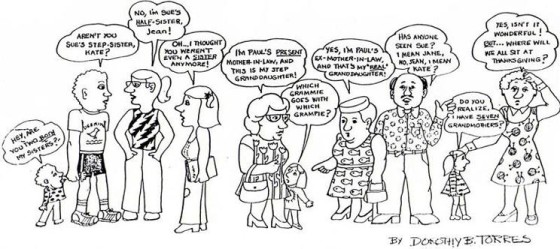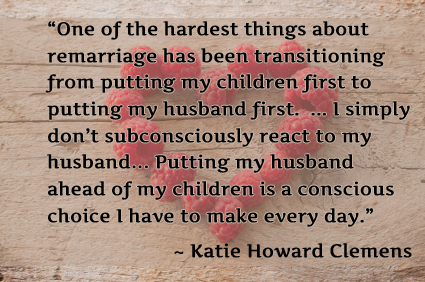Blended Family Myths ~ Family Roles and Discipline

A continuation of posts on blended family myths.
Myth
- Family roles in blended families are similar to those of intact families.
Truth
- There are ex-spouses but not ex-parents. An adult can replace a spouse but they cannot replace a parent.
The role of stepparent is not clear and can vary from family to family. In the majority of cases, children still want their biological parents to remarry or the deceased parent to come back to life.
Children are quick to remind the stepparent, “You’re not my dad/mom.” While stepparents may support, nurture and even love their stepchildren they seldom fill the role of the biological parent.
Even among the children in stepfamilies their descriptions/roles are different.
- Full siblings (both children are from the mother’s first relationship),
- Half siblings (one child is from the mother’s previous relationship and the other child is a product of the remarriage).
- Unrelated siblings (one from the mother’s previous relationship and one from the father’s previous relationship).
Myth
- Both Parents Should be Disciplining the Children.
Truth
- Initially, the biological parent should take responsibility for disciplining their children. As a stepparent entering the stepfamily with the intent of immediately assuming a parenting role and administering discipline of the children is a recipe for disaster. A new stepparent needs to take things slow, gradually building a coaching relationship with the children.
Some experts say a stepparent should approach the relationship as a friendship but I disagree. Unless your stepchild is a total dweeb they probably already have plenty of friends their own age and they don’t need your friendship.
A stepparent is an adult which holds a position of authority with the stepchildren. While they’re not a biological parent they do hold a position of authority. Additionally, the biological parent needs to give the stepparent authority to parent their children.
The following books are excellent resources for your reference.
Customer Review from Amazon
If your step family is dealing with serious issues I recommend “Smart Stepfamily, The: Seven Steps to a Healthy Family” by Ron Deal or “Step Coupling” by Susan Wisdom and Jennifer Green. You will find either of these books to be far more comprehensive and useful, although each one has its own strengths.
The “Smart Stepfamily, The: Seven Steps to a Healthy Family” is a book written from a strong Christian perspective and as such provides significant spiritual and biblical background for people of faith.
“Step Coupling” approaches the step family more from a secular counseling context and therefore does not delve much into the moral or ethical aspects of the various issues facing step families. Indeed, when discussing a foundational issue like honesty or dishonesty, the “Step Coupling” book explicitly states neither value is right or wrong.
This was almost a deal-breaker for me. I suspect even most non-religious people would struggle with the idea all behavior is value neutral. Nevertheless, the book largely arrives at the same conclusions as its Christian counterpart – but from a different perspective.
All in all, I think any stepfamily going through external or internal struggles would be well served to read both books. Both bring unique and significant insights into the challenges step families face. The “Step Coupling” book is somewhat more earthy and easy to read, being filled with concrete examples from actual step families.
The “Smart Stepfamily, The: Seven Steps to a Healthy Family” book feels a little more detached, but still does a very good job of communicating the key issues that step families need to address, while acknowledging the spiritual needs of those involved and how to address them.
In this sense, it is perhaps the deeper of the two. Either book will do a good job in helping the step family better understand itself and move toward a more fulfilling future together.







